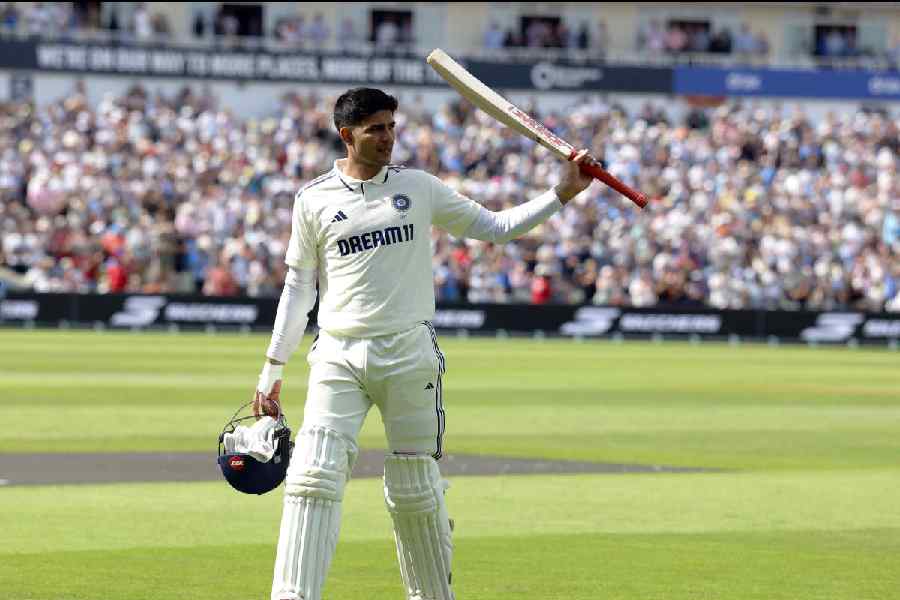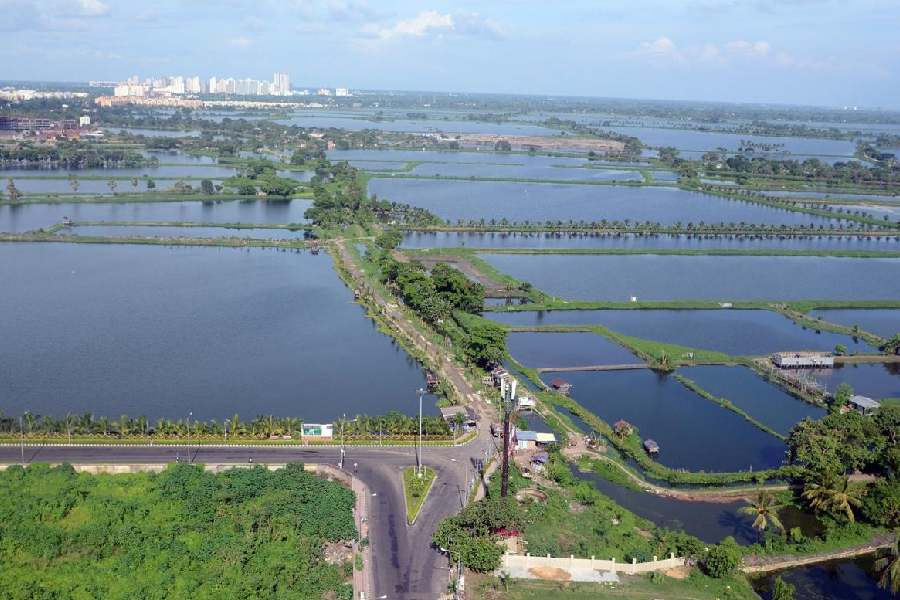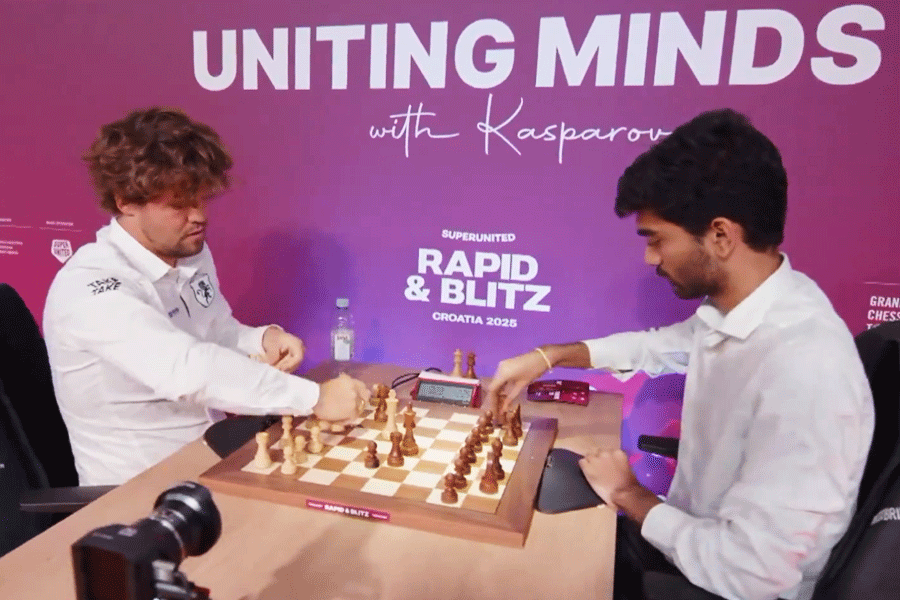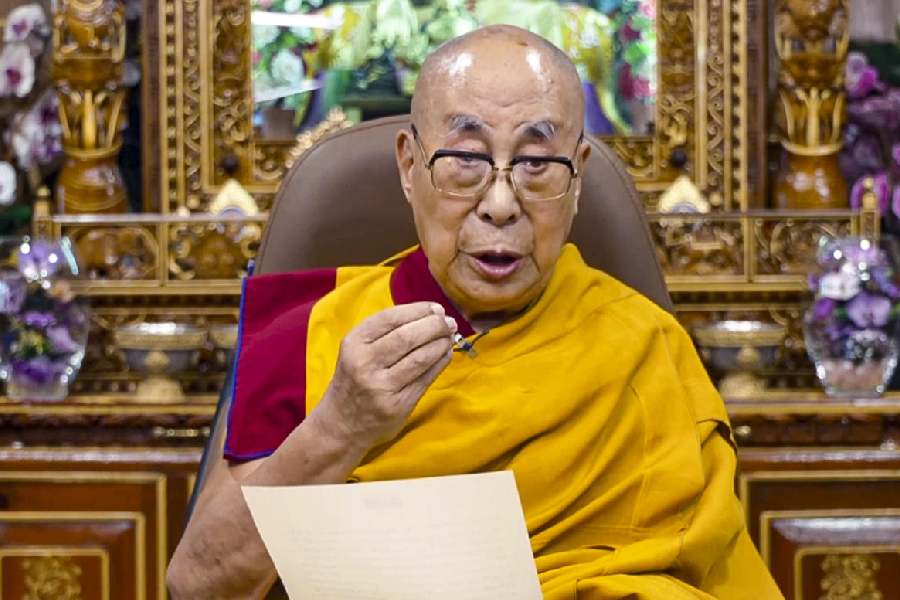|
|
| Take a breather |
I normally avoid taking on the job of tour-guide for foreign people who’ve come visiting India. It’s something many of us have done a lot in our youth and it’s an easy trap to fall into: you meet friendly, seemingly or actually intelligent firangs; you want to get to know these exotic creatures better and they too seem interested in engaging with you; “we are here too short a time,” as some of them say of their visits; and in this too short time you end up being eager to show them something a little different, a little out of the way, another profile of the city and culture you know; something parallel or even at a downright right-angle to the mainstream touristic experience they would otherwise get — or so you convince yourself. Sometimes this works out fine for both parties, sometimes it can be a disaster. The foreign party can be genuinely interested or have their own narrow agenda; they can appreciate what you are doing or take you for granted — as if this is what all locals are genetically programmed to do, that is, take you around their cities. Sometimes, when you pay the return visit to that always-expensive, always-busy, abroad, there is reciprocation, but many times there is not (“I would love to meet you for coffee but this week I’m very busy!” and this after you’ve spent days and several meals with them). Sometimes it’s a genuine connection, sometimes it’s a complete waste of your time.
Given the frequency of the latter, (with not just me but many of my Indian friends) my policy now is to agree to meet someone for an exploratory coffee or a drink first, keeping the commitment minimal. If that goes well, then things progress to a meal or the joint attendance of some fun and interesting event, and only if that works out do I commit more time.
********
Last week, I got lucky. I met a couple who were engaging and engaged, genuinely curious about Calcutta and India yet not overly in awe of culture and place, willing to roam and yet in no tearing hurry, with no desire for merely covering ground. The other bit of luck, though I didn’t see it that way at first, was the bandh that was declared on the day we were supposed to hang out and see the city. The strike put serious constraints on any plans we might have had of ranging far and wide, but it also threw up some opportunities: we appreciated that the shut-down had cut out what might have felt like obligatory visits to some of the more touristic places in town; we realized we could walk along the roads without major danger to life and limb; we could even talk to each other as we strolled (not a word one uses any longer for walking in Calcutta), because of the precious hornless silence that had descended on the city.
The first half of the day, my new friends spent by the poolside of their hotel room, till it was established that no urban civil war was imminent. Before starting off, I pointed out a few places of interest from the window of their room, such as the historic jail that lies just beyond the perimeter of the hotel swimming pool, the entrance to the National Library, the zoo obscured by trees, and so on. We wondered if a specially cruel punishment for badly behaved convicts might not be a cell with a view of the hotel pool with its display of tan-seeking skin. We scanned the different layers of modern building that lay between the posh hotel and the old jail and library, and I tried to point out the differing horrors of yellow-box Sixties’ class-IV government-servant quarters; the crumbling, dirty-white blocks of Seventies’ pretend-Bauhaus; the pink, Eighties’ apartment block; and the future nightmare of the colourless high towers rising in the distance.
Slums and typical south Cal middle-class buildings were missing from this view but we were walking past them soon enough. The high jail wall, the battered old bridge, the viscous black canal, the old style basti abutting the newer, tarpaulin shacks, and then, as if from a bad cartoon juxtaposing ‘rich’ and ‘poor’, the tastefully pristine white towers of Minto Park. I was glad to lead my friends out of these extreme contrasts and into the ‘normalcy’ of western Elgin Road and Harish Mukherjee. “This,” I almost said, “is my Calcutta, my comfort zone, my root elaaka.” If you look harshly, Harish Mukherjee Road is quite grim, but somehow the coffee chains and malls have not yet trampled over it and, for a moment, on that overcast evening we could have been wandering in any decade between the Sixties and the Nineties.
We made our way through narrow lanes and old houses to the big road and savoured the fact that we could cross it without having to skip around triple parked cars and sprint. Jagubajar was shuttered but not closed, and I took my friends up and down dark stairs and into the maze in search of a karela which neither had ever seen. Having inspected the last of the day’s shobji stock, we went back up the stairs. There we paused as I had a thought. The man I was with happened to be one of Germany’s greatest contemporary film-makers, a cine-essayist whose brilliance now spans forty years, and I thought it only right that we should try and have a drink in Tripti Bar in honour of Mr Ritwik Ghatak, whose thek the place used to be. The bar was shut of course, so I took them to Bishop Lefroy Road to point out the house of the other great Bengali film-maker. This short tirtha-jatra now complete, we returned past glowing razor-wire and the growl of random buses to the hotel.
********
How strange and yet how unremarkable that we need police shootings and other genres of killings and riots to bring the city back to us. The kind of clean air, the beautiful absence of cacophony, the sense of slow freedom that were available on bandh-Wednesday are impossible to get even on a Sunday or a big national holiday. It almost makes you want to turn the clock back to the time when hartals were plentiful and regular; it almost makes you want to start a campaign for the city to shut down completely once every fortnight, one day, mid-week (this is Calcutta after all, and it has to be a working day elsewhere for full satisfaction) — no cars, no buses, only emergency traffic, a day when even labourers and domestic workers have a reason not to work and when the more privileged are forced to sit at home or engage with their own neighbourhood.
I fully realize that the strike signified the exact opposite of peace and humanized calm. I’m hardly the only one to anticipate that with this government and with this Opposition, with this police and these criminals, we in Calcutta and Bengal are about to see not sanity and balance but possibly the grossest violent upheaval in the near future. But I’m willing to be in a loony minority and hope that at the other end of the tunnel we have entered lie many days such as last Wednesday, but without the reasons that triggered it.











